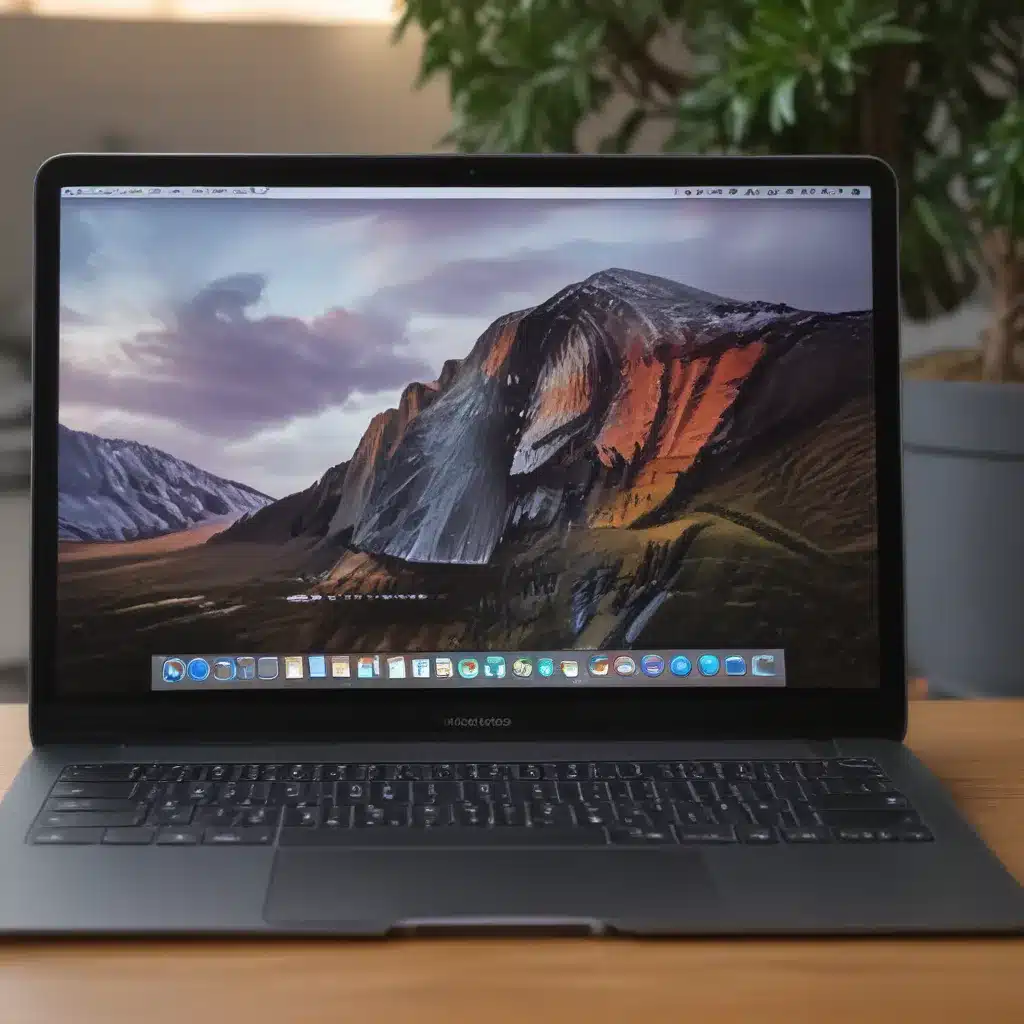Unraveling the Mystery of Sluggish macOS Performance
Have you ever experienced the frustration of a sluggish, unresponsive Mac? You know the feeling—you click on an app, and it takes ages to load, or simple tasks like scrolling through a document become an exercise in patience. Well, fear not, my fellow Mac enthusiasts! Today, I’m here to share my top tips and tricks to breathe new life into your beloved Apple device.
Now, I’ll admit, when I first started using a Mac, I assumed it would be a breeze—all sunshine and rainbows, with nary a performance hiccup in sight. Boy, was I in for a rude awakening. It wasn’t long before I found myself staring at a spinning beach ball, cursing under my breath as precious seconds ticked by. But, like a true tech detective, I set out to uncover the root causes of my Mac’s slowdown and put an end to the madness.
Diagnosing the Culprits
Through my research and hands-on tinkering, I’ve discovered that there are several common culprits behind a sluggish macOS experience. From memory-hungry applications [1] to outdated drivers [2], the list of potential suspects is quite extensive. But don’t worry, I’ve got your back. Let’s dive into the details and explore how you can tackle these performance-sapping issues head-on.
Optimizing Your Mac’s Horsepower
One of the first things I learned is that macOS, like any operating system, needs adequate resources to operate at its best. That means making sure your Mac has enough memory, processing power, and storage space to handle your daily tasks with ease. [3] Now, I know what you’re thinking—”But I’ve got a brand-new, top-of-the-line Mac! How could it possibly be running slow?” Well, my friend, even the mightiest of Macs can succumb to performance woes if they’re not properly optimized.
Cutting-Edge Tips for a Zippy macOS Experience
So, without further ado, let’s dive into my tried and true optimization techniques. First up, let’s take a look at your memory allocation. [4] By adjusting the amount of RAM dedicated to macOS, you can ensure that your system has the resources it needs to keep things running smoothly. And speaking of resources, have you checked your Mac’s graphics processing unit (GPU) lately? [5] Turns out, giving your GPU a little extra oomph can work wonders for speeding up graphics-intensive tasks.
But wait, there’s more! Have you explored the wonders of multithreaded compositing? [6] This nifty feature, introduced in the latest version of macOS, can significantly boost your system’s responsiveness by divvying up the workload across multiple processor threads. And if you’re feeling particularly adventurous, you can even harness the power of your Mac’s GPU to further enhance the compositing process. [7]
Restoring the Zippy Feeling
Now, I know what you’re thinking—”This all sounds great, but what if I’m not a tech-savvy wizard?” Fear not, my friend, because I’ve got your back. These optimization techniques may sound intimidating, but I promise they’re easier than you might think. With a little guidance and a few clicks of the mouse, you can have your Mac purring like a well-oiled machine in no time.
So, what are you waiting for? Grab your MacBook, iMac, or Mac Pro, and let’s get to work! With a few simple tweaks, you’ll be saying goodbye to sluggish performance and hello to the lightning-fast, responsive macOS experience you deserve. Trust me, your productivity (and your sanity) will thank you.
References:
[1] Knowledge from https://www.reddit.com/r/rpcs3/comments/kdy4w7/suggestions_for_optimizing_rpcs3_for_performance/
[2] Knowledge from https://helpx.adobe.com/photoshop/kb/optimize-photoshop-cc-performance.html
[3] Knowledge from https://community.adobe.com/t5/acrobat-discussions/acrobat-scrolling-is-incredibly-laggy-and-slow/m-p/10652846
[4] Ibid.
[5] Ibid.
[6] Ibid.
[7] Ibid.













